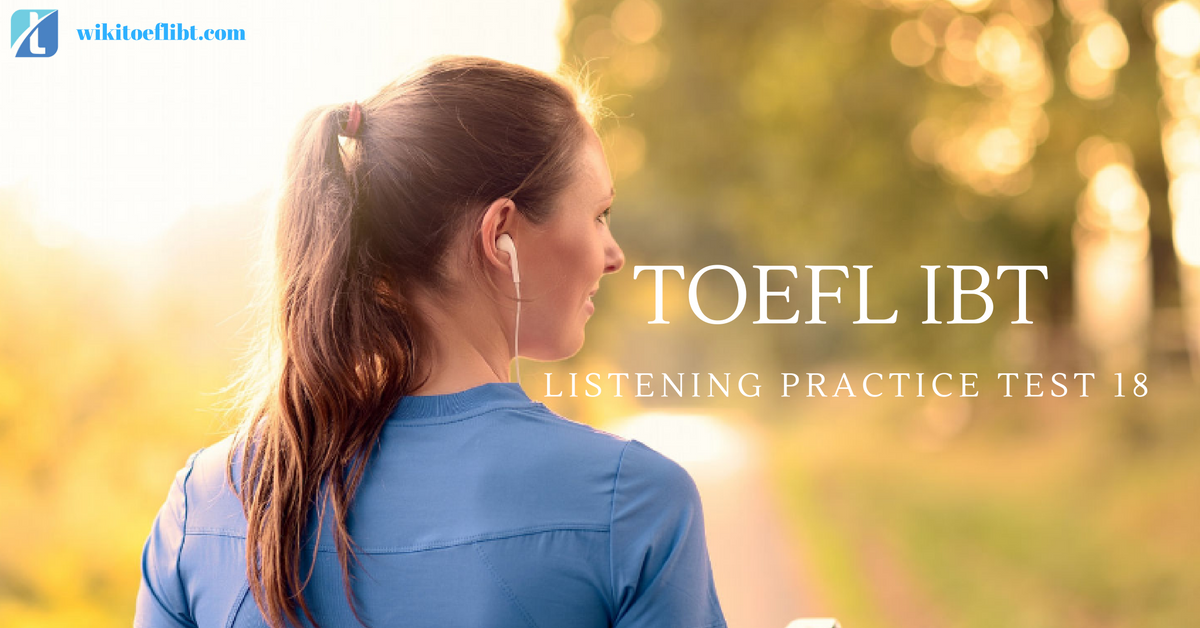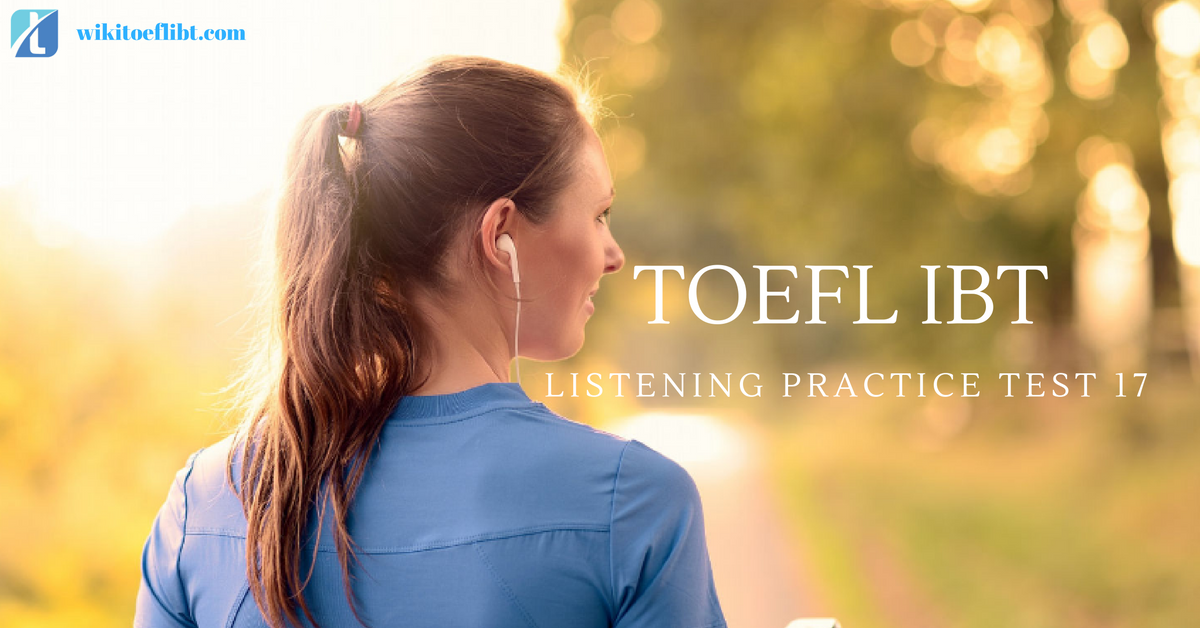TOEFL IBT Listening Practice Test 11 From Delta’s Key TOEFL Test Solution & Explanation
1. A, C
The students discuss how they feel about their classes. The woman asks How do you like your classes this semester? The man replies Not bad,I guess. Thermodynamics is the hardest. The man asks How are your classes? The woman replies Pretty good, actually. All of my professors are great, and I really like my discussion class in Russian history. The students also discuss not having enough time to study. The man saysIt takes a long time for me to do the problems, and then I don’/ have enough time to do the reading for English and history. There just aren’t enough hours in a day. The woman saysI hear you; …Id end up working 25 hours a week. I never had enough time to study. (2.1)
2. C
The woman’s purpose is to agree that lack of time isa problem. The man says There just aren’t enough hours in a day. The woman replies I hear you, an expression of agreement. (2.3)
3. B
The woman says I like the discussions because we can go beyond the lecture and the reading; …I get a lot out of the discussions. I think I learn more, you know, when I get a chance to talk about Russian history. I certainly remember more of the details.And that sure helped me on the first test. (2.2)
4. D
The man says . ..I’ve never cared for discussion classes. I prefer the lecture format. Id rather listen to my professor than to my classmates. (2.3)
5. B
The man suggests that the woman find out more about a job opening. He says Hey, I know just the job for you! I saw—there s a notice on the job board in the Student Center—I just saw it today. There’s a job opening for host of the graduate student lounge.(2.4)
6. A
The professor mainly discusses the role of ethylene in plant aging processes. The professor says Several of the processes related to growth and aging in plants involve the effects of hormones. Today I’ll talk about two aging processes—the ripening of fruit and the falling of leaves in autumn. These processes involve a hormone called ethylene. (2.1)
7. D
The professor says Ethylene is unique among plant hormones because it s the only hormone that s a gas.(2.2)
8. A, C One effect of ethylene is that fruit becomes softer as it ripens: One example of the aging process is the ripening of fruit. The ripening of fruit involves several changes in structure and metabolism; One change is the weakening of cell walls, which softens the fruit. Another effect is that trees shed their leaves in the fall:Another aging process in plants where ethylene plays a role is the falling of leaves in autumn.(2.2)
9. C
The professor’s purpose is to summarize the chain reaction of ripening. The release of ethylene causes fruit to ripen, which then causes the release of more ethylene, which then causes the ripening to spread from fruit to fruit. Thus, one bad (rotten) apple causes other apples to spoil, as the signal to ripen increases and spreads. (2.3)
10.
Yes: The decrease in chlorophyll causes fruit to lose its greenness and become ripe: …the decrease in chlorophyll content, which causes the fruit to lose its greenness.
Yes: Apples in storage bins are flushed with carbon dioxide to keep the air circulating: …storage facilities have to slow down the ripening caused by natural ethylene. For example, apples are stored in bins that are flushed with carbon dioxide.Circulating the air with carbon dioxide prevents ethylene from accumulating….
No: A tree’s roots grow hairs that help it absorb water from the soil: Not supported by the information in the lecture.
Yes: Weakened cell walls at the base of a leaf cause the leaf to break away: As the influence of ethylene becomes stronger, the cells start producing enzymes that weaken the cell walls of the breaking layer.Finally, with the help of wind or rain, the leaf breaks away at that layer and falls from the tree. (2.6)
11. B
The professor implies that both hormones and environmental factors cause leaves to fall. The falling of leaves involves the hormones ethylene and auxin. Environmental factors such as wind or rain also play a role. (2.4)
12. A, D
The professor says A manager has the ability to set goals, and then to accomplish what he or she sets out to do. Business managers shoot for results. This means that once you set your business plan and budget for the year, you have to achieve the sales, the market share, the earnings—whatever you set out to do. (2.2)
13. A
The professor’s purpose is to illustrate what a good manager does. The professor says But good managers have to adjust to changing circumstances…. but let me share a story I tell all my students.It s about two promising young people of equal intelligence and ability. Both are college students, and both want to go on to a top graduate school of business. (2.3)
14. C
The professor implies that May allowed events to keep her from reaching her goal. The professor saysBut then one year she gets the flu before final exams, and she performs poorly on her exams; But something always happens to wreck May s plans.(2.4)
15. B
The professor says After trying several different approaches—studying harder, reading more, asking for help—what she ends up doing is finding a graduate student to tutor her. She works long and thinks hard. And, of course, you know the end of the story: Kay gets her A. You can infer that Kay illustrates the point that success is possible if you keep trying. (2.4)
16. D
The professor wants a more satisfactory response from the class. The professor asks Now, what kind of manager is each student, but the students do not answer the question sufficiently. The professor repeats the question by asking But who s the better manager: May or Kay? After that, the students give more satisfactory responses to the professor’s question. (2.3)
17. B
The professor means that Kay set goals and achieved results, as managers do. The professor’s main point is that managers set goals and achieve results, andKay’s actions illustrate this. The professor saysShe had grasped the essentials of good business management—not because she worked so hard, but because when one action failed, she tried another, and another, until she achieved her goal. That is what managers do. (2.4)
18. B
The student would like the professor’s advice about a research project. The student says …StudentActivities is trying to find out what students think about the different events we sponsor. So I’m designing a study for them, and I was wondering ifI could get your advice. (2.3)
19. A
The student says Well, like I said, we want to find out what students like and don 7 like about our events—like the concerts we have, the masquerade ball, the spring picnic, and so on. (2.2)
20. B
The professor says A survey can be highly structured and does n 7 require a face-to-face situation, so that s an advantage. You could do a survey in the form of a printed questionnaire, or you could also do it over the telephone. (2.2)












